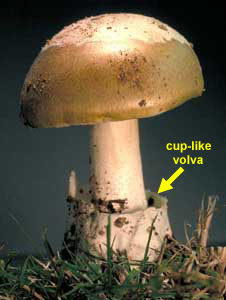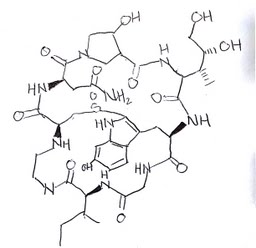The Amanitin Toxin
Galerina autumnalis contains a cocktail of amatoxins such as α-amanitin, β-amanitin, and γ-amanitin. This family of toxins is known to be present in genus Amanita. There are some exceptions to this guideline such as Conocybe filaris. Another example of a member of the genus Amanita would be Amanita phalloides, also referred to as the death cap mushroom (pictured below). Although, the death cap mushroom has proven to be far more lethal than Galerina autumnalis. The lethal dose has been reported to be around 5-10 mg of the toxin (Lincoff 1977). This would mean a healthy human adult would need to consume roughly twenty Galerina autumnalis caps in order to result in a fatality.

In a study comparing the toxin levels in Galerina to that of Amanita the overall toxin density of the specific fruiting body depends on the substrate (Enjalbert, 2004). Regardless, α-amanitin was found in higher quantities within G. autumnalis.
What are the symptoms of Galerina
autumnalis poisoning?
Galerina autumnalis needs to be digested in order for
the toxin to take effect within the human body. Common digestion symptoms
arise in as little as six hours in some cases. This is usually the
first indication that the mushroom is the amanitin poisoning. These symptoms
usually include persistent vomiting and diarrhea which then brings in concerns
about dehydration. In more severe cases patients have reported signs
of jaundice, liver failure, convulsions, pulmonary edema,
and delusions.
Amanita
phalloides, the
death cap mushroom. What are the treatment plans for
Galerina autumnalis poisoning?
Australian National Botanic Gardens. 2013.
How the toxin works.
The α-amanita toxin is a toxin naturally found in Galerina autumnalis and other poisonous mushrooms. Click on the picture to view the original image to which this is drawn from.
Go
home.
Continue to
classification.
Redrawn. Kali Fleischauer 2013.

